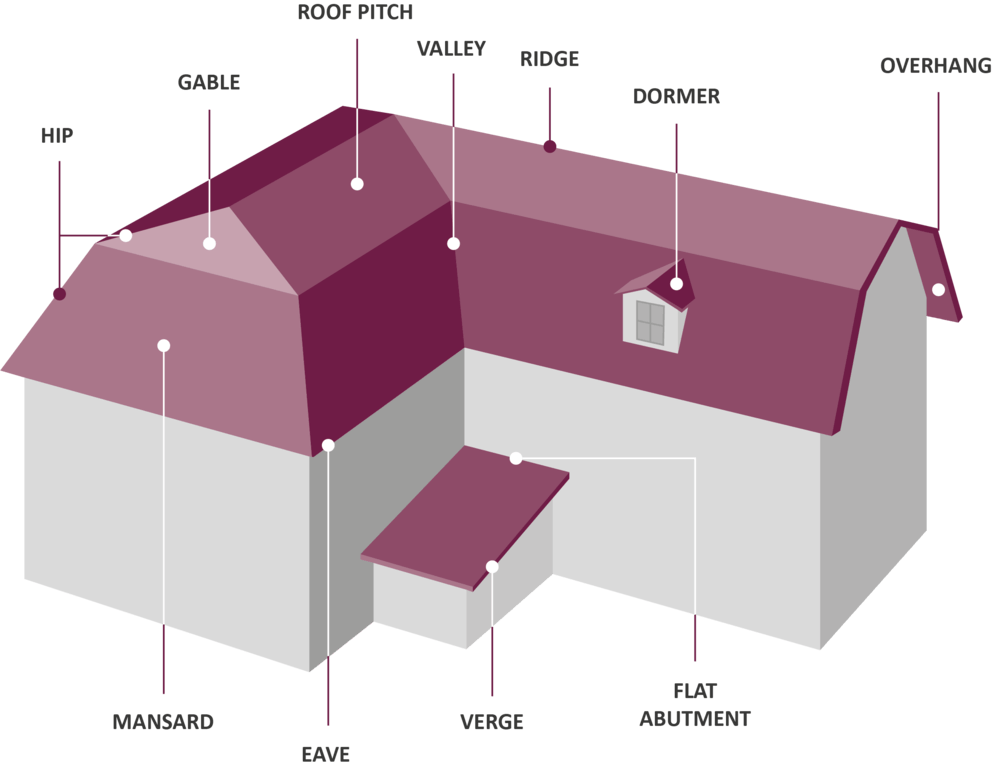The roof is one of the most important components of any building. Learn about the different parts or elements of a typical roof.
What are the different parts of a roof?
The design of a roof can in some cases be quite complex and each part of it carries out a different functionality.
To help you understand the roofing terms used by technicians and roofers, we have compiled a roofing glossary with the most commonly used terms and vocabulary.
The different parts or components that make up a typical house roof are described below.
ROOF
The covering that forms the top of a building, meant to protect it against the atmospheric agents and the weather. Roof shapes can differ greatly, but the main factors which influence the form are climate and materials.
ROOF PITCH
GABLE
Top end of the wall of a building, usually in the shape of a triangle, where it meets the sloping parts of a roof.
VALLEY
Edge which collects water from the sloping roof planes. The point at which two planes of the roof are joined. Concave.
HIP
Inclined edge, where water is channeled down the sides of the roof. Convex.
MANSARD
Lower slope, considerably steeper than the upper.
RIDGE
The top covering of the building, part of the roof where the sloping sides join at the top.
OVERHANG
The edge of a roof, protruding outwards, beyond the side of the building generally to provide weather protection.
EAVE
The edge of a roof that sticks out over the top of the wall.
VERGE
The edge of a pitched roof. Traditionally mortared to prevent rain and wind ingress but now proprietary ‘dry’ systems are available.
FLAT ABUTMENT
Where the roof meets a vertical wall.
DORMER
A window that sticks out from a sloping roof.
If you are interested in knowing more about the different roof designs, do not miss our list of the 10 types of roofs.

